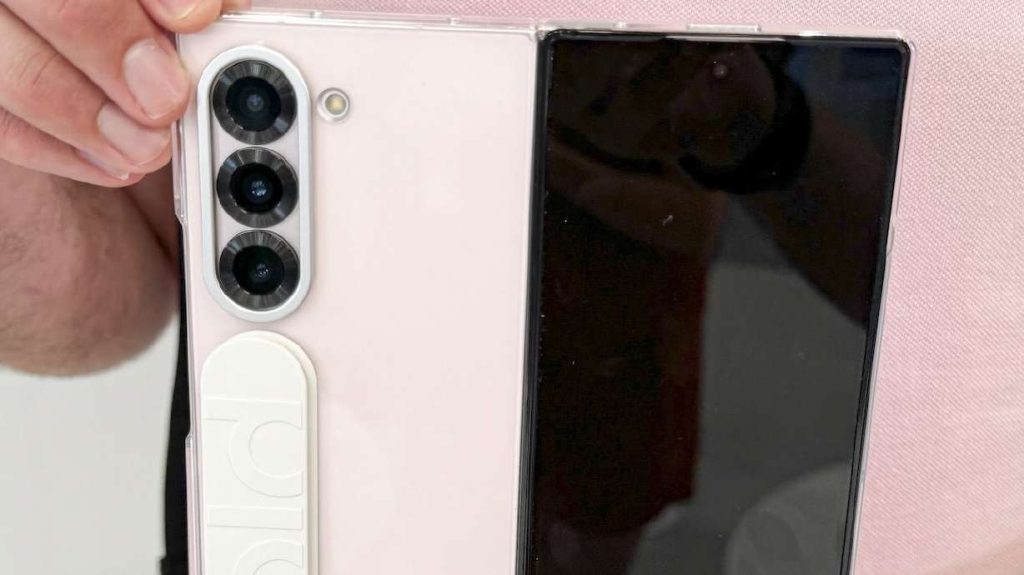PARIS — Samsung’s latest generation of flip phones aims to woo traditional mobile phone users with the help of artificial intelligence.
The company announced updates to its foldable device and earbuds and shared details of a forthcoming smart ring at its first-ever annual “Unpacked” event in Paris on Wednesday.
But the stars of the show are Samsung’s latest foldable phones, which are lighter, slimmer and packed with AI tools: the Galaxy Z Fold 6, a smartphone that opens outward like a book to become a tablet, and the Galaxy Z Flip 6, a clamshell phone with a design that evokes the flip phones of the early 2000s.
The company says both devices feature more durable hinges, longer battery life and are powered by Qualcomm’s Snapdragon 8 Gen 3 processor, which is optimized for AI processing.
But these upgrades come at a high cost. The new Galaxy Z Fold starts at $1,899.99, up $100 from last year, and comes in three colors: silver, pink, and navy, while the Z Flip starts at $1,099.99 (also up $100 from last year) and comes in four colors: silver, yellow, blue, and mint. The devices went on sale Wednesday.
David McQueen, research director at ABI Research, believes foldable displays will be introduced into other mobile products such as tablets, laptops and smartwatches over the next few years.
“While the user experience of foldable devices improves with each new version, the industry is yet to fully convince consumers of the improved use cases, tactile benefits and added features of foldables,” he said.
Ahead of the event, Samsung president and head of mobile experience T.M. Lo told CNN that the new prices reflect component costs, but that they could fall further in future.
“Prices will depend a lot on how the relevant technologies develop and how quickly they evolve in the future,” he said. “We think it will take time (for prices to come down), so for now we’re focusing on the premium side.”
Lo also believes Galaxy AI software will make its foldable line the market leader as companies like Google, Huawei and Motorola launch foldable and clamshell models. Samsung’s foldables have 80% to 85% of the market share. Some predict Apple will launch a foldable iPhone within the next few years.
Samsung’s big AI initiative
Both the Flip and Fold come with new AI tools, including an updated Note Assist feature that can transcribe, translate, and summarize voice recordings directly in Notes, as well as translate phone calls in real time. Another new feature on the Samsung keyboard, called Composer, aims to create text suggestions based on keywords from emails and social media apps and analyze previous posts to reflect a user’s tone.
Google’s AI assistant, Gemini, is also built directly into the phone, allowing users to say “Hey Google” or swipe the corners of the screen to get help when writing or searching the web. Other features include a circle-to-search tool and the ability to offer image options based on a quick sketch or drawing when using Samsung’s S Pen stylus.
Lo told CNN that AI is deeply integrated into the company’s Galaxy products, and that the company is also taking a hybrid approach to privacy, letting users choose whether AI requests are performed directly on the device or in the cloud.
“People who care about privacy or low latency can use on-device AI rather than the high volume, high performance that cloud-based AI can provide,” he said. “We can provide the best technology for consumers’ use cases, so our devices will no longer be called just smartphones, but AI phones.”

Beyond Foldables
Samsung teased a finger-worn smart ring earlier this year, and now the company has announced pricing and new specs for the device. Packed with sensors, the ring offers health monitoring features like temperature measurement, sleep tracking and personalized insights. Available in black, silver and gold, the device will go head-to-head with Oura, the leader in the smart ring market. Prices start at $399.99 and it was released on Wednesday.
Smart rings are the fastest-growing category of wearable devices, expected to grow 29% year-over-year over the next five years, according to IDC Research. Francisco Jeronimo, IDC’s vice president of data and analytics, said consumers should be drawn to the product because it has a “less intrusive” form factor than a smartwatch, yet can still track important vital signs.
“I wouldn’t be surprised if Apple comes out with its own Ring soon,” Geronimo said. “Of course, it could cannibalize smartwatch sales, but I don’t think it’s a big concern.”
That’s because people may like using a smartwatch for its ability to send messages and perform advanced health tracking like ECGs, but those same people may prefer to sleep with a smart ring on their finger rather than a smartwatch on their wrist.
Meanwhile, the new Galaxy Buds 3, which start at $179.99, include an interpreter mode that can translate lectures or meetings into other languages in real time, and add new controls that let you play and stop music without having to physically touch the earbuds.
It comes in two colors, white and silver, and went on sale on Wednesday.


